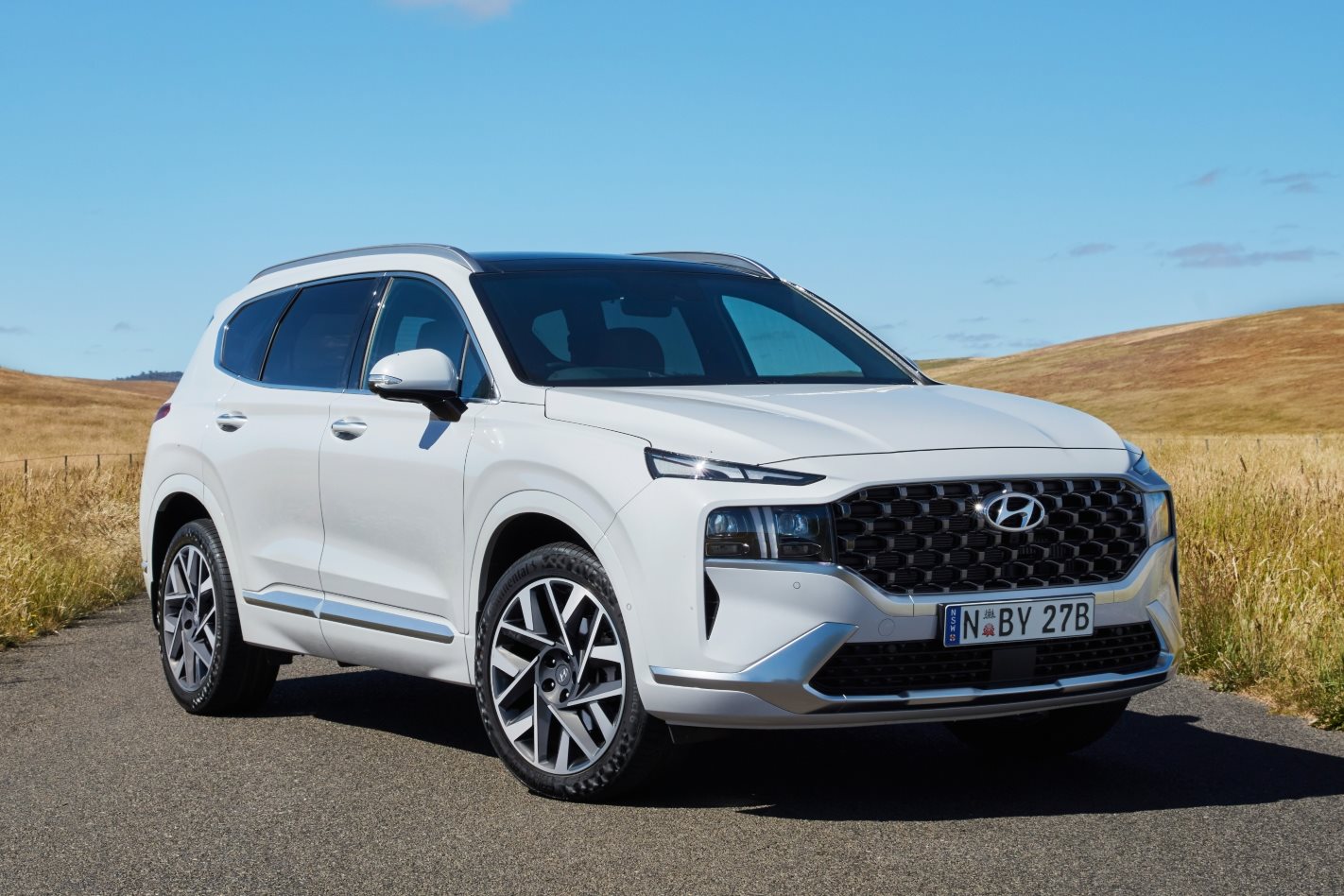
Things we like
- Seven usable seats
- Sharp styling and quality
- Extensive equipment for all variants
Not so much
- No hybrid yet
- Annoying lane-keep assistant
In today’s mercilessly competitive market, new cars can have a tendency to age like a glass of milk.
What seemed like revolutionary styling touches date faster than Liam Hemsworth on Tinder, and the advancement of powertrains makes last year’s efficiency hero look like a steam train against the latest engines.
But not the Hyundai Santa Fe.
When it rolled out in its fourth generation, Hyundai’s then-biggest SUV was devilishly handsome and brought a package of driving dynamics and practicality that put competitors in the segment on notice.
But that was a mere two years ago and, unlike so many of its rivals, the Santa Fe has not aged a day.
Which is why it’s so surprising that Hyundai has already treated the model to an update – and it’s not a light gesture either.
Its maker is calling the 2021 Santa Fe an ‘updated’ model but, as it rolls on a new platform, has significantly restyled aesthetics and a heap of new technology, it would have copped no criticism from us for choosing to label it as ‘new’.
Price and specs
As before, the range is comprised by four key variants all of which can be ordered with a 3.5-litre petrol V6 engine and front-wheel drive or, for a $3500 premium, the 2.2-litre turbo diesel which also gains the company’s Htrac all-wheel-drive system.
Pricing has increased over the previous iteration, with the entry offering kicking off from $44,700 which represents about a $700 shift.
There’s a greater premium to pay at the pointy end of the range with the flagship Highlander now costing $61,700 – that’s up by about $3000 but the range-topping version gets the most significant extra kit.
That’s the version we focused on for the 2021 update.
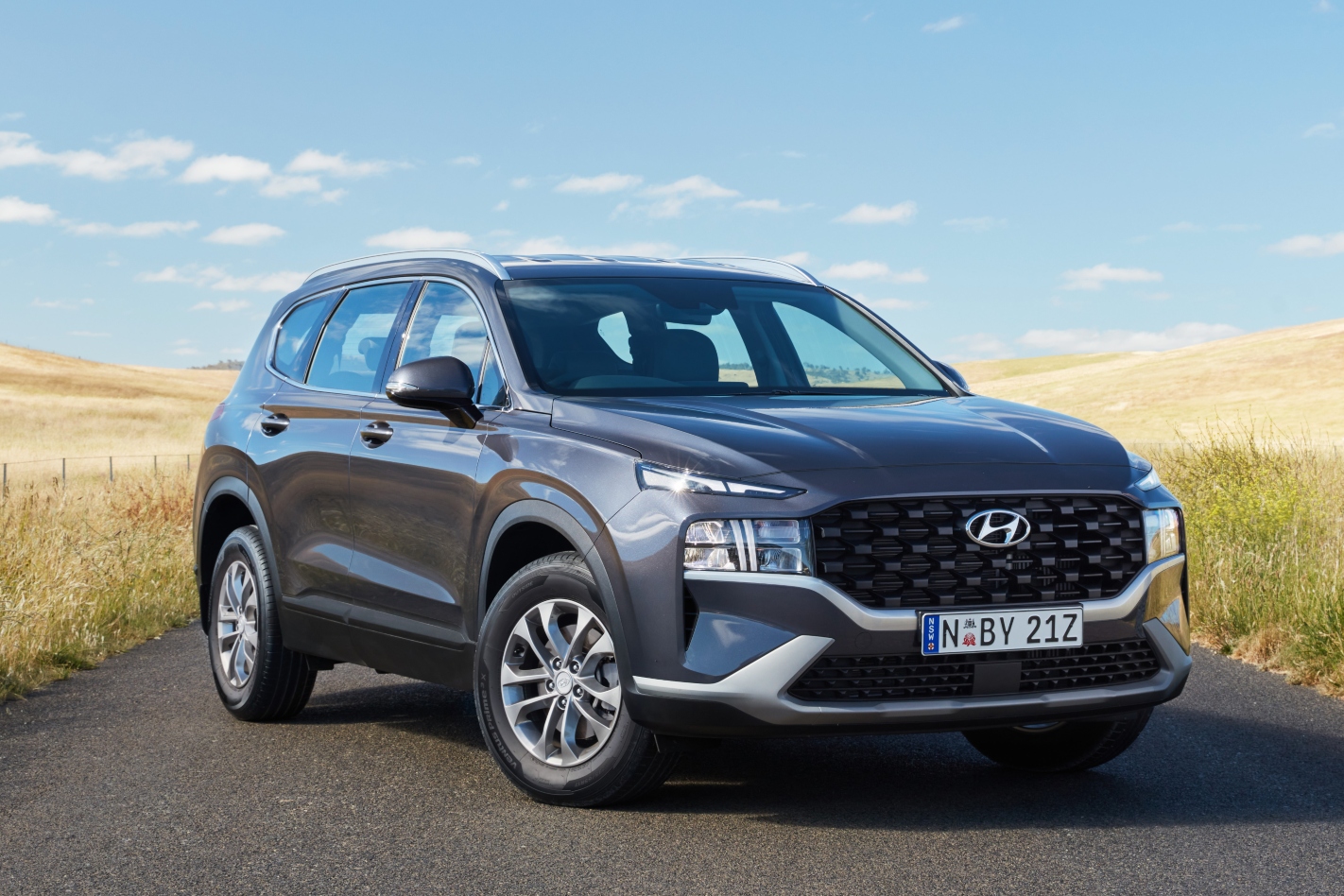
Entry versions get an 8.0-inch central touchscreen for accessing all the information and entertainment options, but the Highlander is equipped with an impressive 10.3-inch version that stands proudly atop the dash and has cinema-screen wide proportions.
It’s complemented by a new fully digital instrument cluster which morphs into different graphics according to the selected driving mode.
Just these two additions have lifted the entire Santa Fe cabin, but it’s just the start of a comprehensive update.
As before, upholstery is finished in top-quality Nappa leather with an attractive diamond-quilted effect.
There are a number of colour and trim options including the use of real aluminium. For our cash, the tan (Camel) leather with black is a knockout.
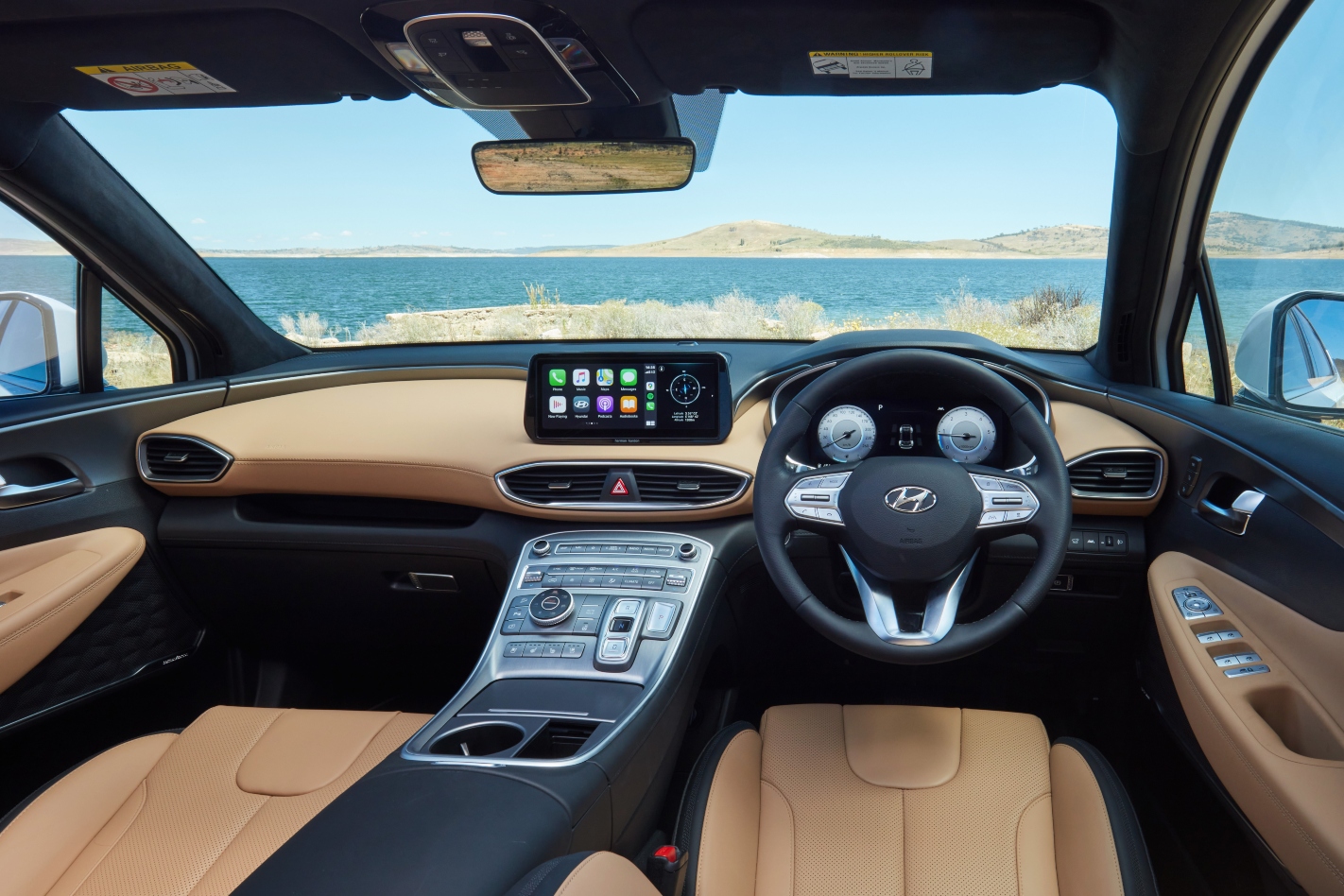
Opt for the Active or above and you’ll get an innovative new flying-buttress style centre console.
Its design ensures all the switches and controls are easy to access, creates a cozy compartmentalized cabin but doesn’t waste space as it offers plenty of storage underneath including wireless device charging.
There’s enough of the previous version’s switchgear and trim to serve as a reminder but there’s nothing wrong with recycling a few components if they worked well in their first outing.
We particularly like the push-button gear selector which adds to the clean, uncluttered centre console.
You’ll pay no extra for heated and cooled front seats with electric adjustment, heated steering wheel, multi-zone climate control, heaters for the second-row seats, panoramic roof, head-up display, and ambient lighting.
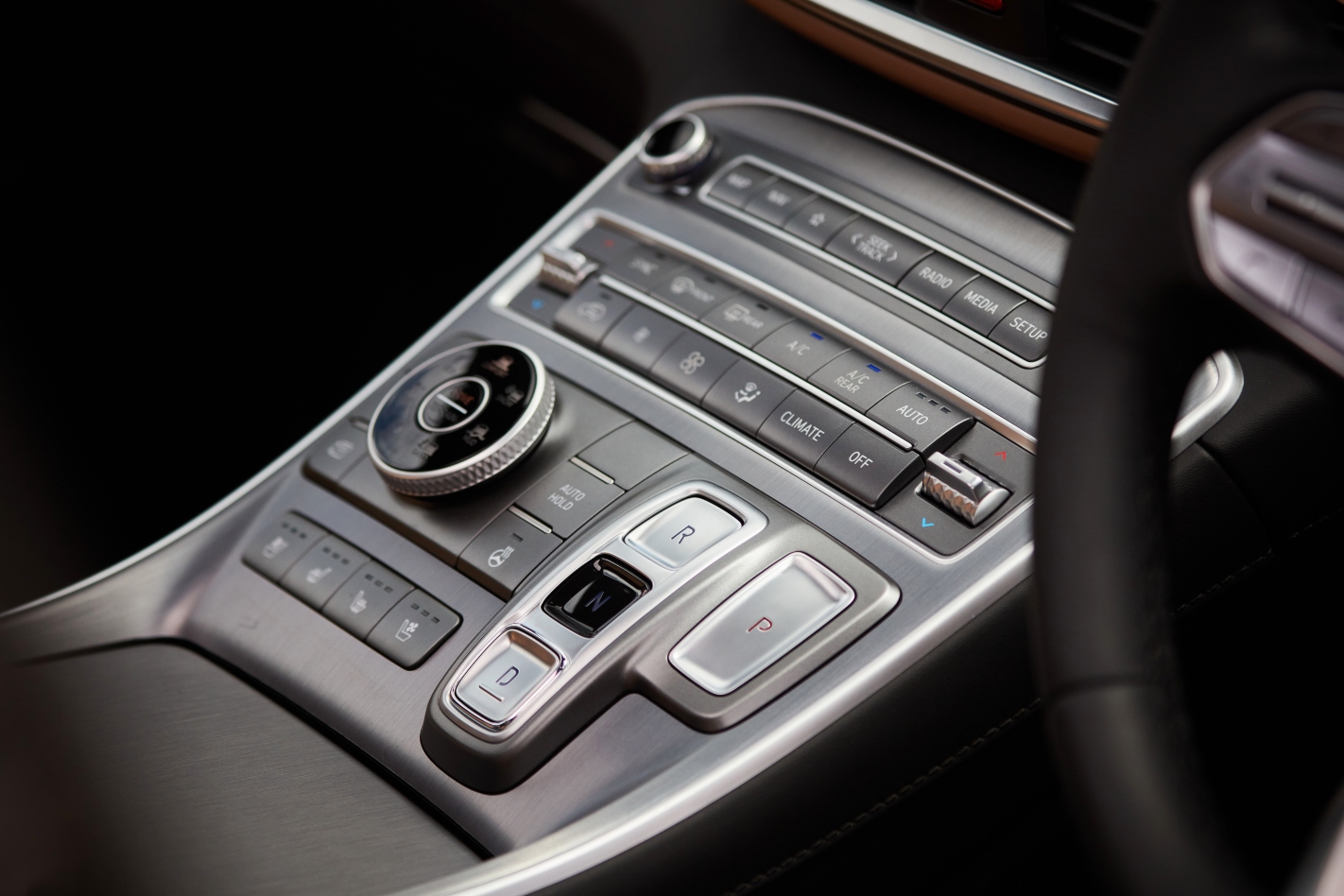
Even in variants below the Highlander, the Santa Fe’s kit list is bursting with compelling equipment including LED headlights, Android Auto and Apple Carplay smartphone mirroring, and adaptive cruise control for all versions.
How practical is the 2021 Hyundai Santa Fe?
The updated Santa Fe’s cabin feels bigger compared with the previous version because it is. Its new platform has allowed the dimensions to be stretched in all directions.
It’s 15mm longer, 10mm wider and 5mm taller with an unchanged wheelbase and that means more for everyone.
Boot space has grown with a maximum of up to 782 litres behind the second row, and there is nearly 50mm more legroom for second-row passengers.
Towing capacity remains unchanged; you can haul a 2500kg braked trailer behind all versions of the Santa Fe, while its 200kg downball eight limit is quite generous.
Out the back there is a third row of seating and, unlike many seven-seaters, the Santa Fe’s third row is at the more practical and feasible end of the spectrum.
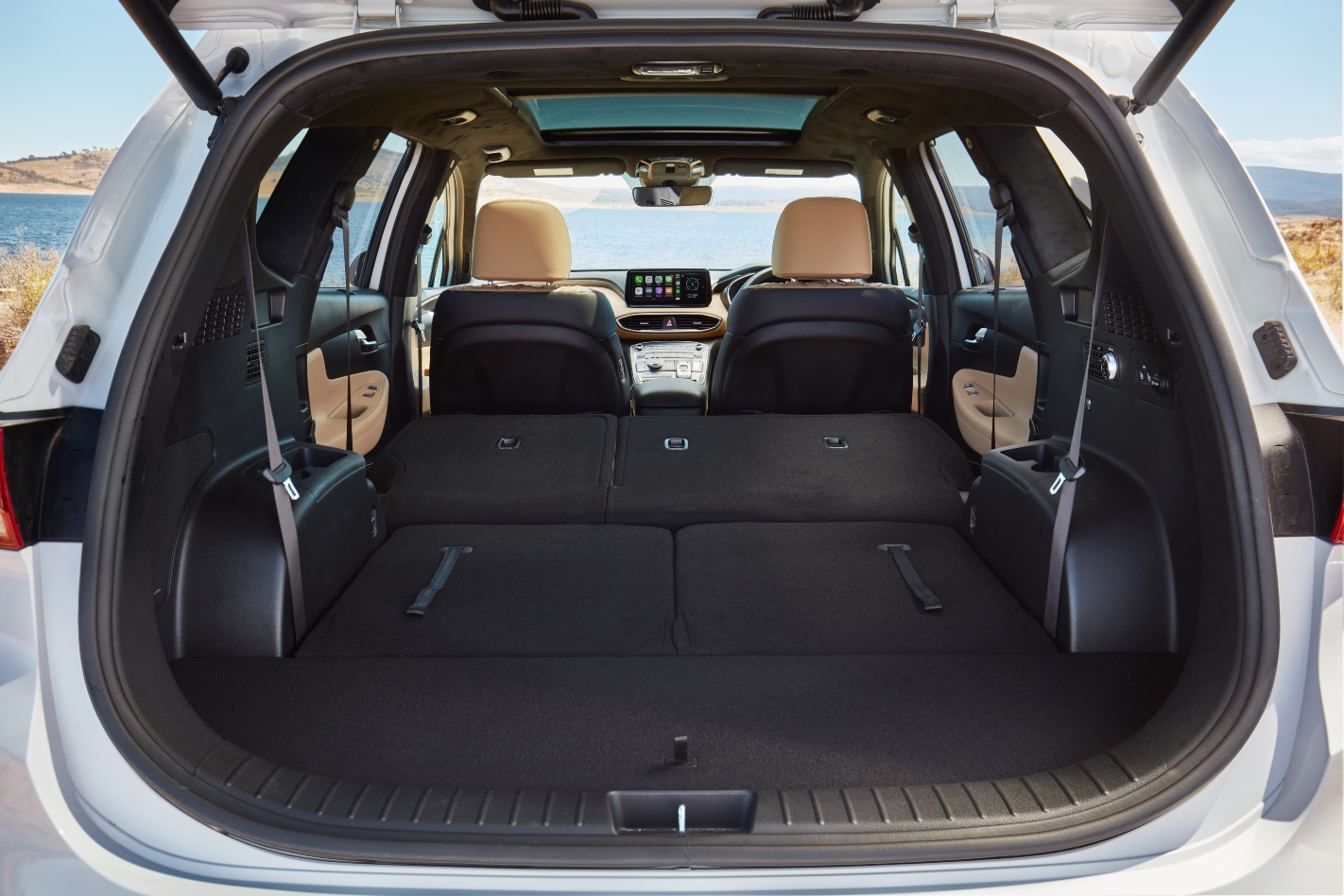
Engines are essentially the same units carried over from the previous version albeit with a retune in the name of efficiency.
The petrol V6 has lost a little power with a drop of 6kW to 200kW but there’s a small improvement to economy from 10.6 litres per 100km to 10.5L/100km.
Better still, the 2.2-litre four-cylinder diesel retains the same 147kW and impressive 440Nm of torque, but has a 19 per cent increase in efficiency, dropping fuel use down to 6.1L/100km from 7.5L/100km.
Unless you insist on petrol power and its slight smoothness advantage, the diesel is absolutely the engine to go for, particularly if you’re doing any kind of distance work.
It’s quiet, responsive and impressively muscular, and pairs perfectly with the standard eight-speed automatic transmission.
You also get the added benefit of all-wheel drive and a number of off-road driving settings for those owners wanting to leave the sealed surface behind.
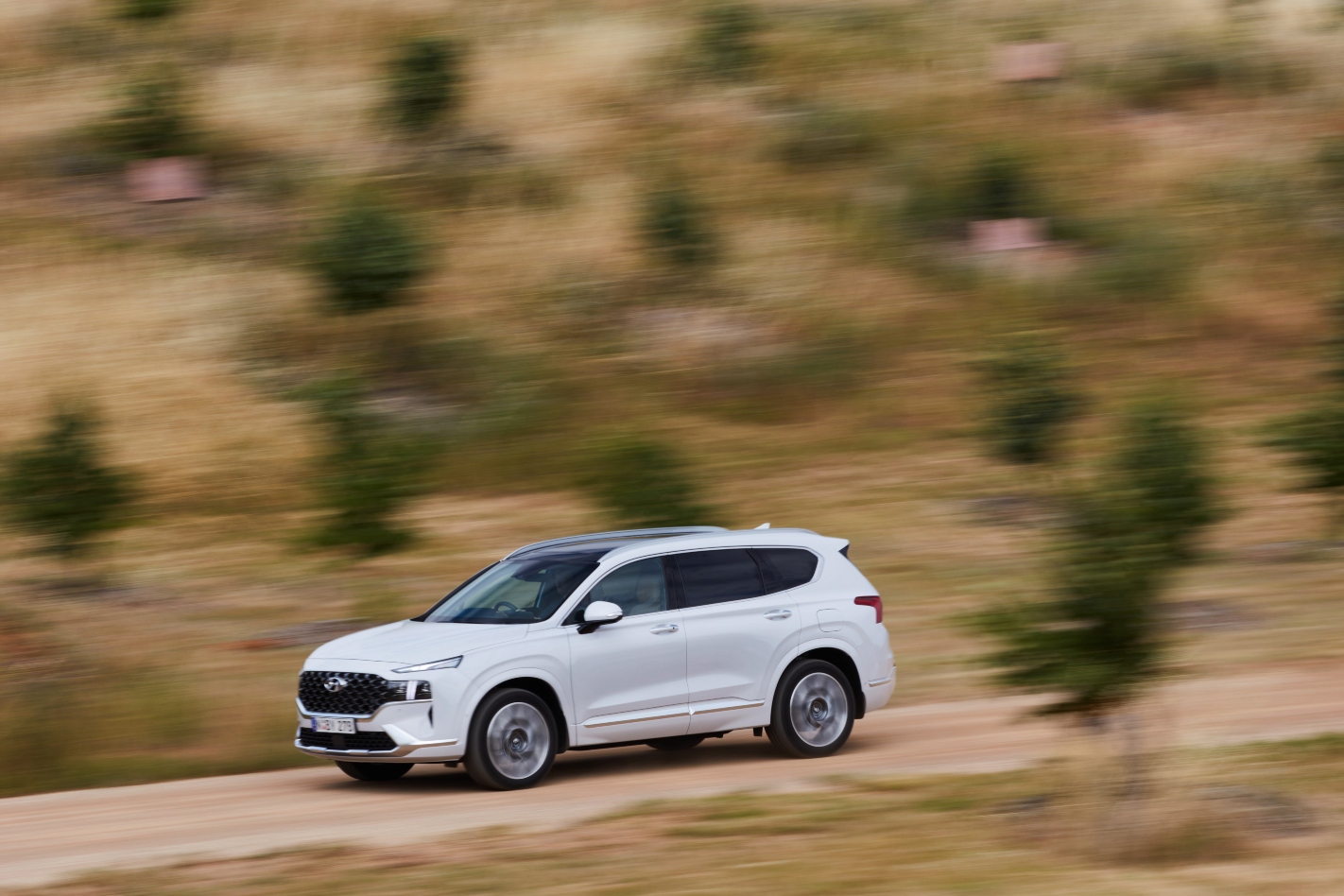
Hyundai’s locally tuned suspension continues to deliver with a likeable ride quality that isn’t to the detriment of handling and driving enjoyment.
The Highlander (and Elite) rides on smart 20-inch alloy wheels which crash through larger road imperfections but are otherwise comfortable.
If it’s an issue, or you want to be replacing slightly less expensive tyres, the variants below the flagship roll on 17- and 18-inch wheels respectively.
An important addition to the new Santa Fe is the extra safety technology included in Hyundai’s Smartsense suite of features.
The active lane-keeping assistant is a little intrusive and tugs annoyingly at the wheel a little too enthusiastically. It is most effective for freeway cruising but was firmly switched off for cruising twistier roads.
The standard forward collision mitigation technology now includes a function to avoid crashes at junctions too.
Fortunately, we didn’t need to experience any of the clever tech but it’s good to know the Santa Fe is keeping an eye on things for if the worst happens.

Also silently watching are a driver attention monitor, rear-cross traffic avoidance and a blind-spot monitor.
And if your mates aren’t suitably impressed by the Santa Fe’s handsome and bold new styling, you can grab their attention with a remote start and parking feature that allows the car to be maneuvered in and out of a parking space.
Simply holding a button on the key-fob fires up the engine to either warm or cool the cabin prior to boarding, while the same device effectively becomes a remote control for the Highlander.
Pressing and holding the button will slowly glide the car in or out of a tight space.
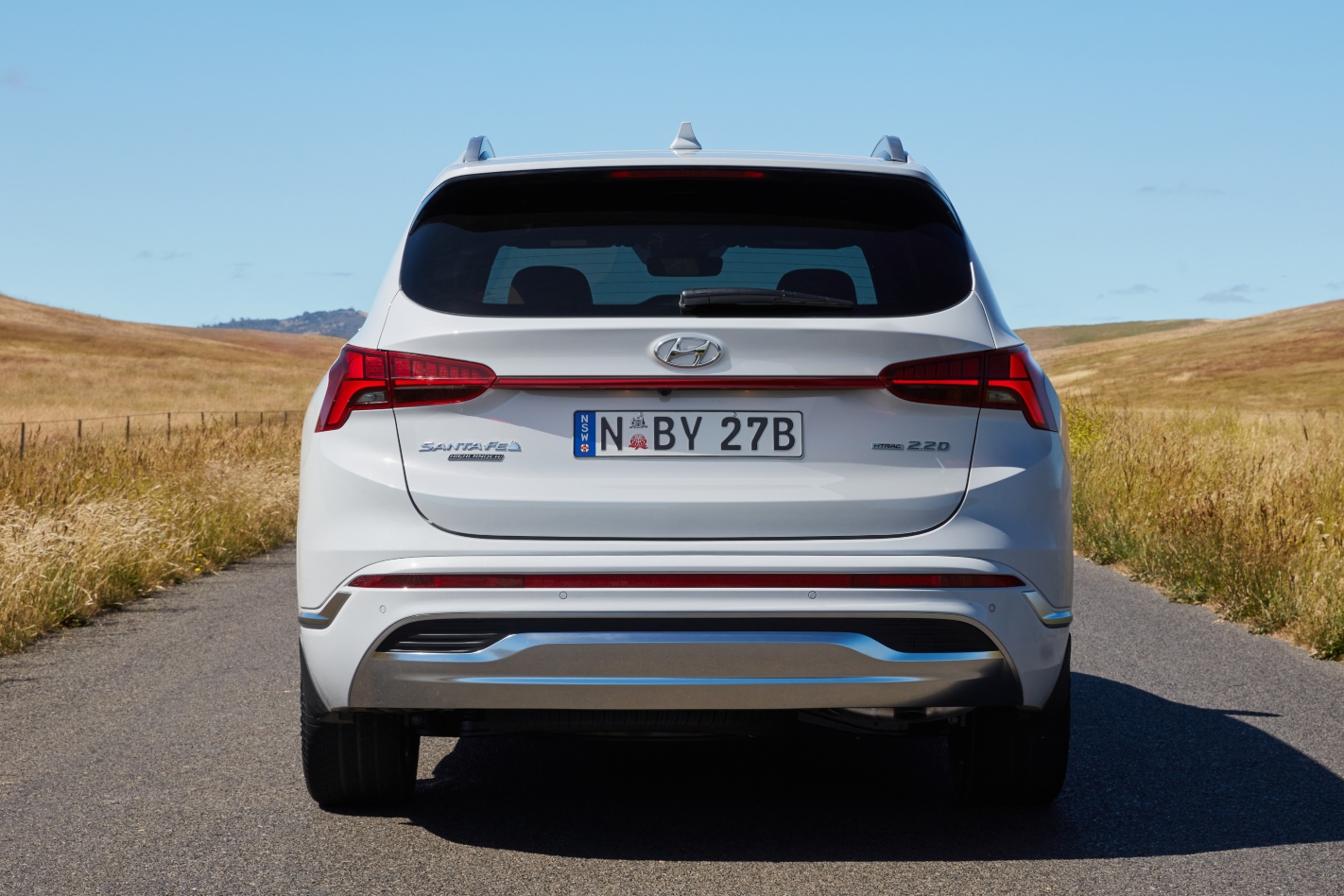
Verdict
There are few things more frustrating in the car world than change for the sake of change and many a decent model has been spoiled by a ceaseless obsession to evolve rapidly.
But the 2021 Hyundai Santa Fe is not guilty. If we’re honest, it needed no enhancement to stay relevant and performing well against some respectable competition.
But the ‘updated’ model is resoundingly good with an incredibly well-rounded set of skills on offer for a sharp price.
And there’s absolutely no shame in labelling that excellent all-round package as new.
Specs: Hyundai Santa Fe Highlander CRDi
Engine 2199cc 4cyl, dohc, turbo diesel
Max power 147kW @ 3800 rpm
Max torque 440Nm @ 1750 – 2750 rpm
Transmission 8-speed DCT auto
Kerb weight 1995kg
Price From $44,700
On sale Now
Things we like
- Seven usable seats
- Sharp styling and quality
- Extensive equipment for all variants
Not so much
- No hybrid yet
- Annoying lane-keep assistant



